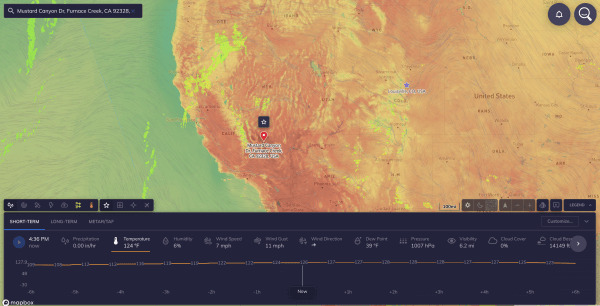Heat-Health Watch System
Implement a robust adaption plan to manage heatwave situations and ensure all health departments have the most efficient response processes in place.
Every year in the US, 65,574 emergency room visits are caused by heat exposure. A heat health watch system ensures efficient operational practices and reduces heat-related hospital costs by $17,481 each summer.
Pharmacy A
Hospital B
Insight In this Dashboard
severity - 1 minor
Prepare Heatwave Safety Plan
Increase awareness for heat-related health issues that may arise during the summer heat by continuously educating staff and patients. Monitor buildings to ensure they are prepared to cope with energy needs.
severity - 2 moderate
Implement Level 1 Heatwave Plan
Ensure all hospital thermometers are monitored four times a day. Temperatures throughout the hospital must not exceed 26°C. Identify cool areas and rooms with a temperature below 26C for high-risk patients. Ensure there is enough staff available on-call in the event of increased hospitalizations. Increase heat safety awareness for high-risk individuals.
severity - 3 sever
Implement Level 2 Heatwave Plan
Continue with level 1 responsibilities and increase staff on the ground. Make sure there is enough water and ice available throughout the hospital. Prepare identified cool rooms and areas for patients.
severity - 3 sever
Implement Level 3 Heatwave Plan
Continue with level 1 and 2 safety procedures. In addition, provide access to cold drinks everywhere throughout the hospital. Move vulnerable patients into designated cool rooms/areas. Consider moving normal operating hours to the evening in order to keep the area cool in the afternoon without overcrowding. Reduce internal temperatures by turning off non-essential light and electrical equipment.
severity - 4 extreme
Implement Level 4 Heatwave Plan
Declare an emergency and increase all procedures followed during levels 1-3. All individuals are at great risk of all heat-related illnesses.
severity - 3 sever
Increased Risk: Heat Rash
Increased risk of heat rash emergency cases. Ensure proper medication and ointments are available.
severity - 3 sever
Implement Level 2 Heatwave Night Plan
Implement a level 2 safety plan during the night hours as well. Keep windows closed during the night so that the building can remain cool. Heat through the night will not offer relief from the heatwave during the day.
severity - 3 sever
Increased Risk: Heat Cramps and Exhaustion
Increased risk of emergency visits caused by heat cramps and exhaustion. Ensure quick and efficient treatment in order to avoid rapid development into heatstroke.
severity - 3 sever
Increased Risk: Heatstroke
Increased risk of heatstroke emergency cases with patients having body temperature exceeding 40C for anywhere between 45 minutes to 8 hours. Ensure proper equipment is available for treatment.
severity - 4 extreme
Bring Workers Inside: Extreme Heat
Inform employers to bring all outside workers indoors. Extreme heat puts all outdoor workers at risk of heat-related illnesses.

